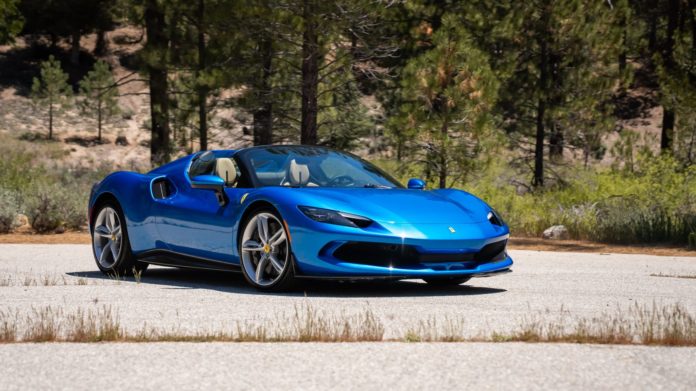Internet chatter in recent years has prophesized that electrification will spell the end of the proper, blue-blooded supercar. That downsized engines, complex driver assist software, and, worst of all, electric motors will create an irreconcilable disconnect between road and driver. Scroll through online automotive forums, and you’ll walk away with the impression that the days of the frantic, loud, high-revving supercar are over.
Except that, in reality, the opposite is true. The doomers fail to understand that, if incorporated correctly, electrification provides supercar makers with greater flexibility. Practically everywhere you look, be it Lamborghini introducing a V12 for the Revuelto or Bugatti developing a brand-new V16 for the Tourbillon, mixing in electrons has created a return to form of sorts for the modern supercar, a focus on producing powertrains that aren’t just potent, but exciting. It’s how we get cars like the Ferrari 296 GTS.
This isn’t to say that finding a balance between electric propulsion and internal combustion is easy. Much of the GTS’s success can be directly attributed to the lessons learned building the SF90 Stradale. Incorporating a twin-turbo V8 with three electric motors to create a plug-in hybrid hypercar is a herculean task. As such, the 296 GTS deviates in its approach, streamlining Maranello’s hybrid formula.
At its core sits a new 120-degree 3.0-liter twin-turbocharged V6, an engine configuration never before seen in a series production Ferrari, sorry, Dino. The ample space between its banks creates an ideal home for its two single-scroll turbochargers. Twin snails smaller than the F8 Tributo’s but built of tougher alloys to withstand increased boost pressure. The same is true of the block itself, which Ferrari deemed necessary to ensure long-term reliability.
The GTS’s redesigned deck lid provides only glimpses of the engine Ferrari engineers call the “piccolo V12” or “little V12” on the count of its firing order, mimicking the note of a proper twelve-cylinder lump. Look in, and you’ll spot it recessed deep into the chassis, a feat made possible by downsized, individual intake plenums integrated into each cylinder head. These, paired with shortened turbo piping, limit the distance incoming and exiting air must travel, as does a more direct exhaust system. The result is a V6 that’s 66 pounds lighter than the V8 it replaces while still producing 654 horsepower by itself.
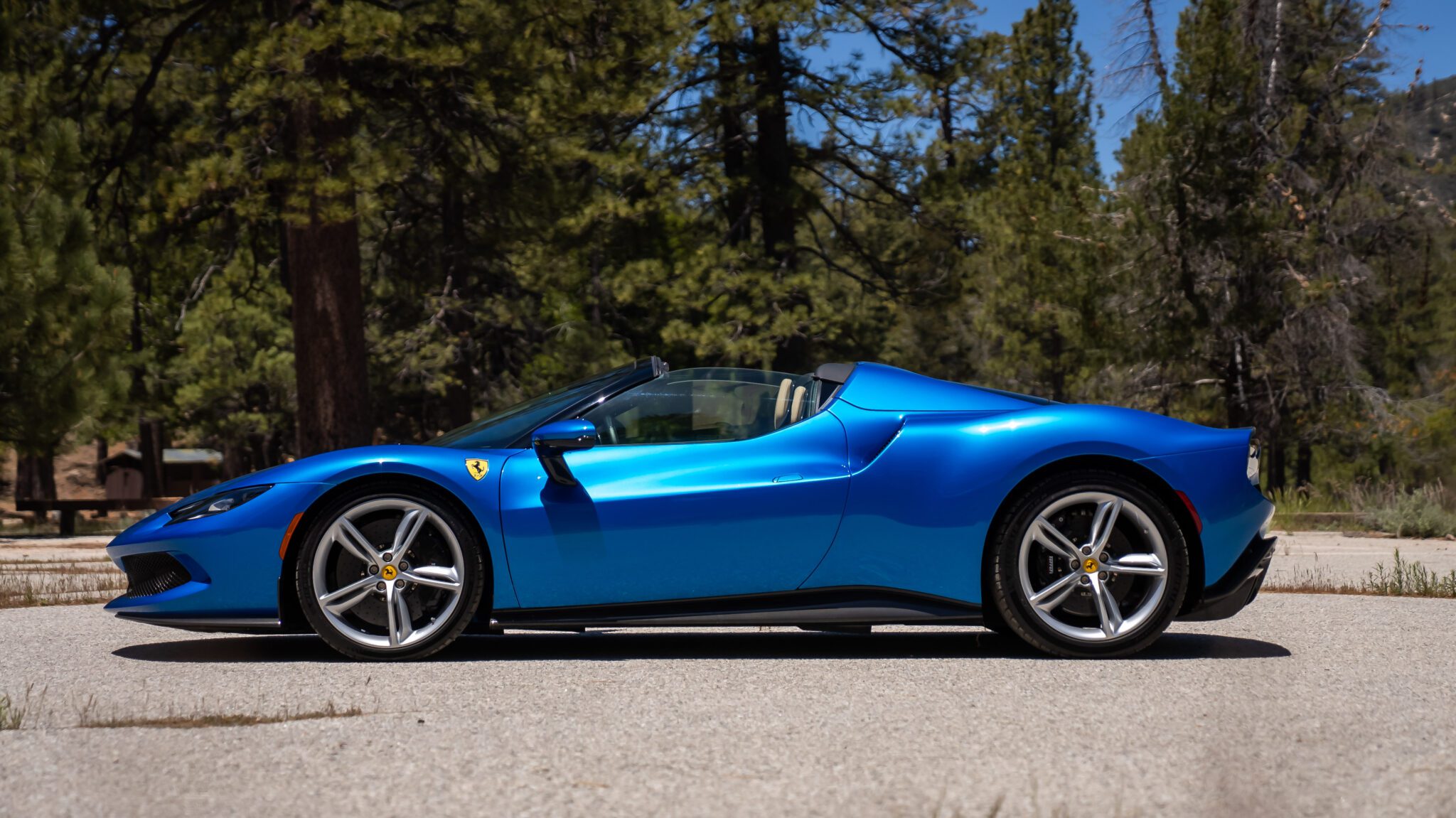
Engineers trimmed weight off the engine to preemptively counteract the gains associated with adding an axial flux electric motor and the 7.45-kilowatt-hour battery pack that powers it. While the box of cells lives in the 296’s floor behind its seats, the rest of the hybrid system nestles into the bell housing of its eight-speed dual-clutch transmission. Like the SF90, the Ferrari 296 GTS can travel on electric power alone. With its electric motor generating 165 hp and up to 232 pound-feet of torque, it’ll cover up to 16 miles at speeds up to 84 mph.
Fire up its V6, and you’ll have access to a combined output of 818 horsepower and 546 pound-feet of torque, all of which goes exclusively to its rear wheels. Flat out, the Ferrari 296 GTS sprints to 62 mph in 2.9 seconds, matching the GTB’s time. Only when you look at its run to 124 mph does the GTS fall behind by 0.3 seconds, completing the run in 7.6. Keep your foot in it, and you’ll surpass 205 mph.
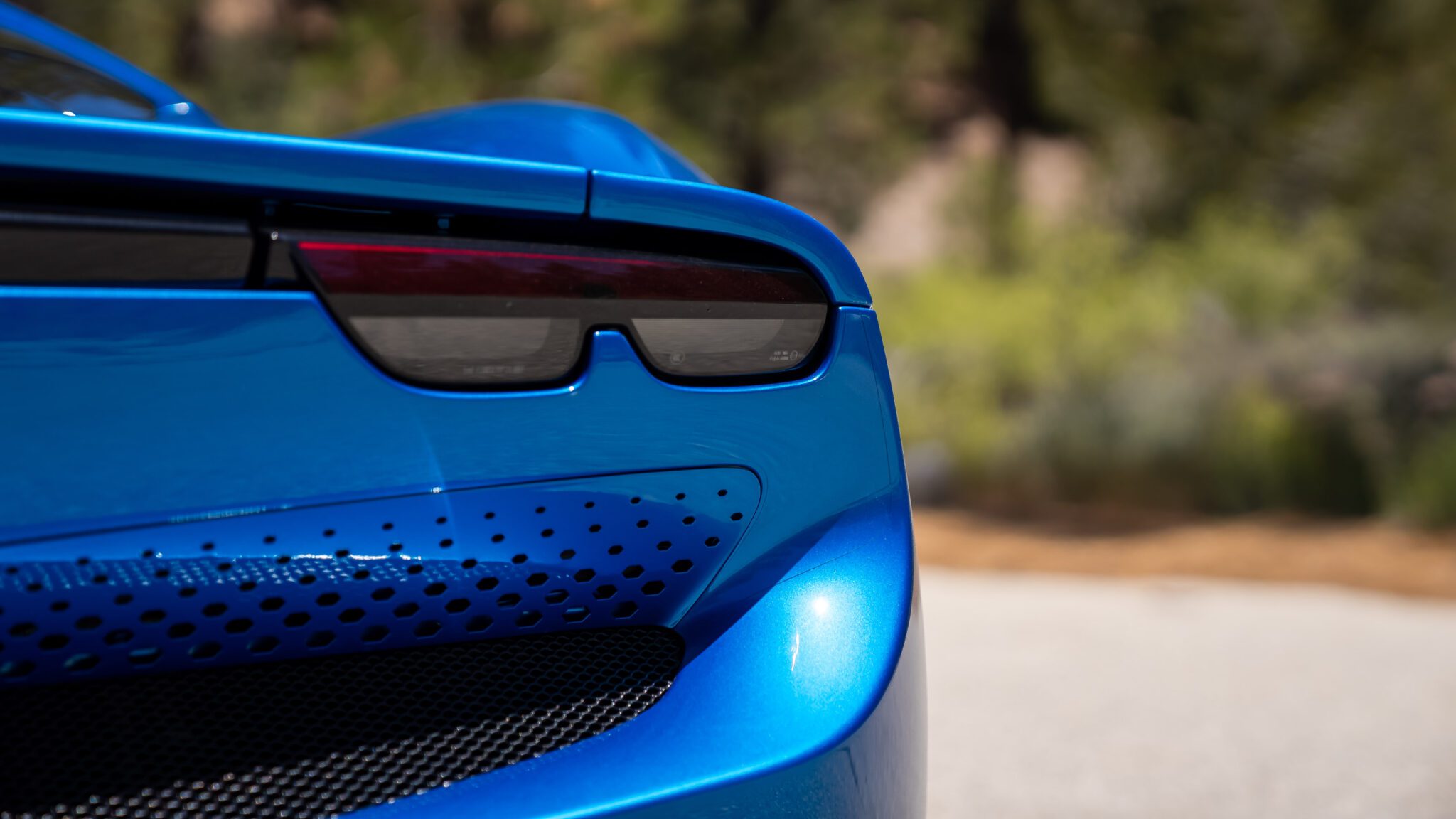
Although impressive, these figures alone fail to convey what makes the 296 such a special machine. Let’s revisit its V6 for a moment because it isn’t just some heavily turbocharged lump that banks on generating tons of low-end torque. It spins up to 8,500 rpm, making most of its power at the upper end of its rev range. Thanks to its closely spaced gears, it’s easy to stay in this Goldilocks zone with its engine howling, producing high-pitched, buzzing notes.
While Hybrid and Performance drive modes will route some engine power to charge the 296’s battery pack, the top Qualifying setting drains it to briefly deliver maximum performance. Fully unleashing an 818-hp Ferrari should require some bravery; it’s something you should have to work up to, but that’s not the case with the GTS.
As you connect corners, pressing its accelerator further, an invisible hand of finely tuned stability software ensures that massive output meets the road in a predictable and manageable way. Coupled with a torque-filling electric motor that creates an almost perfectly linear power curve, hustling the 296 is far easier than expected.
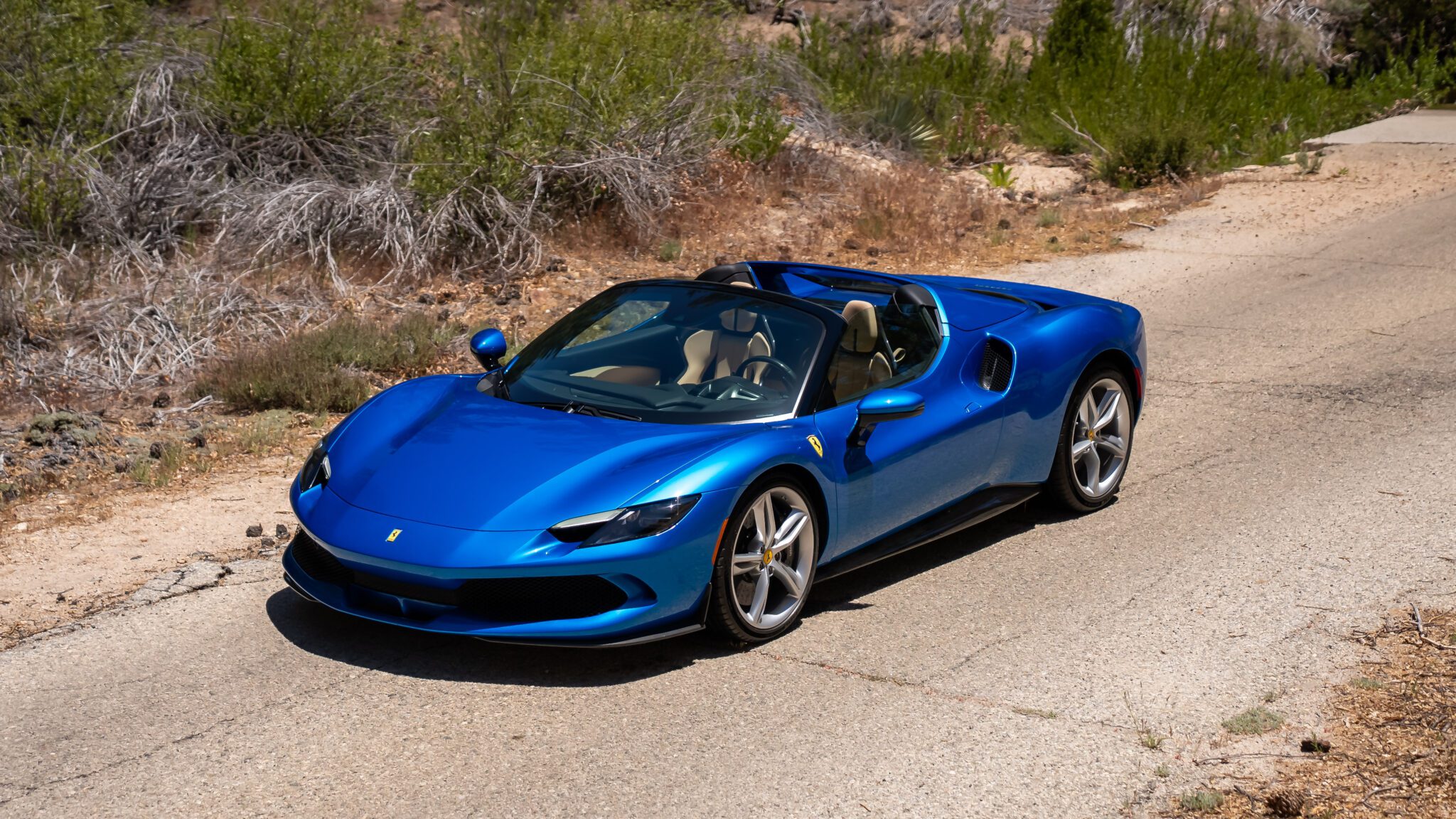
Even as you dial back stability control and begin to induce the occasional slide exiting a bend, again, the Ferrari 296 GTS responds predictably. It makes you feel like the superhero you aren’t without fully taking over. Dive into the next corner, and its front end turns instantly without hesitation or disagreement from its front tires. Thanks to its adaptive Multimatic shocks and a quick steering rack, the GTS feels agile and responsive, transmitting plenty of feedback through its chassis and steering.
In typical Ferrari fashion, the 296’s steering is light but precise. It makes you want to grip its leather and carbon-fiber trimmed steering wheel with your fingertips, as even subtle inputs result in significant direction changes. Similarly, its carbon-ceramic brakes, with 15.6-inch rotors up front and a 14.1-inch set out back, reward careful modulation. A solid initial bite further instills confidence that simultaneously is easy to apply at slower speeds around town.
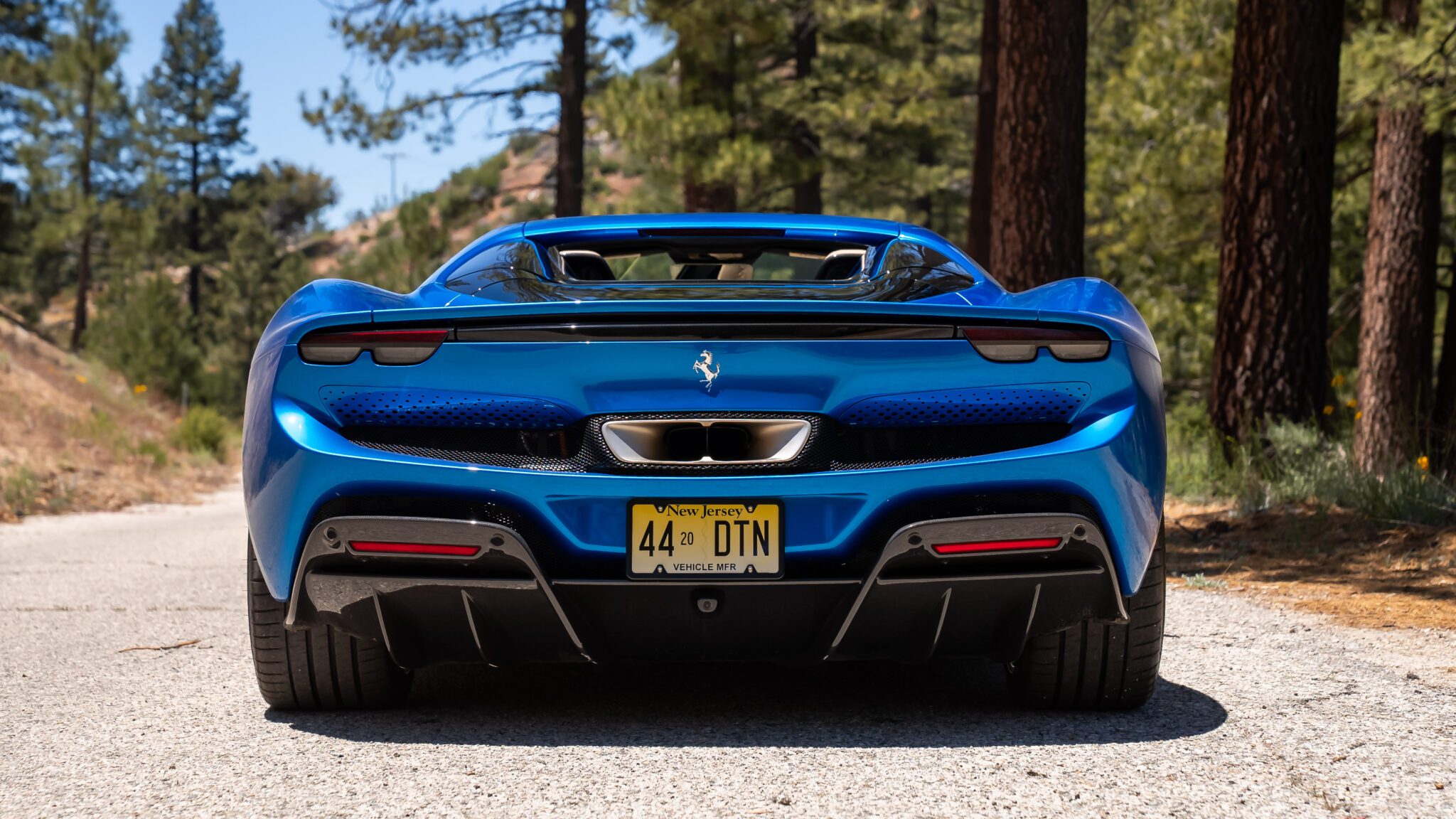
Crucially for the GTS, nothing separates it from the GTB on a twisty road. It’s just as quick, balanced, and responsive as its hard-top counterpart despite lugging around an extra 220 pounds. Although Ferrari touts a 3,395-lb dry weight figure for the GTS, it’s achieved with the lightest configuration possible, including thin carbon seats and composite wheels. Expect a car with fluids and a more comfort-oriented configuration to weigh significantly more than that quoted figure.
For as quick and powerful as the Ferrari 296 GTS is, it’s a relatively small machine. Compared to the F8 Tributo, its plug-in successor is two inches shorter, an inch narrower, and an inch lower. Alongside a downsized footprint, it sports a less fussy styling with simple, elegant lines that draw clear inspiration from Prancing Horses of the 60s. You won’t find any brash aero bits either, with the 296 sporting only a small active spoiler nestled into its rear bumper.
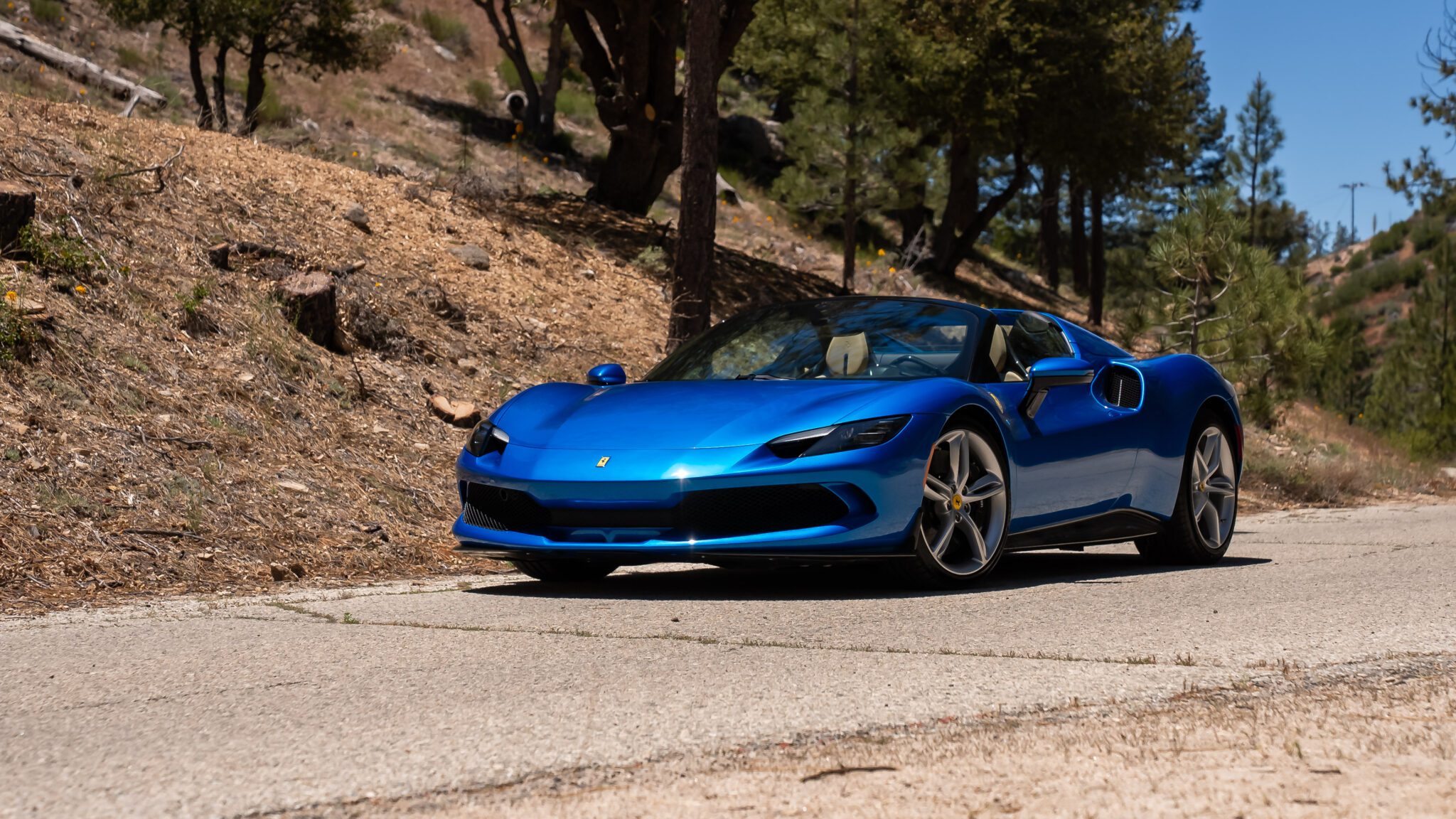
Instead, the GTS counts on subtle ducts, such as the inlets positioned just below its headlights to cool its brakes. As such, it can focus on routing cool air over its body to cool its engine and generate downforce while directing hot air to its sculpted undertray. Equipped with the optional Assetto Fiorano package, it’ll generate up to 794 lb of downforce at 155 mph or 574 lb without it.
Stepping in, the Ferrari 296 GTS feels spacious, mainly because it lacks a traditional center console. As such, you’ll find plenty of head and legroom accommodating even the tallest among us. Although supercars aren’t necessarily known for sporting cabins made of the best materials, the 296 is covered in them.
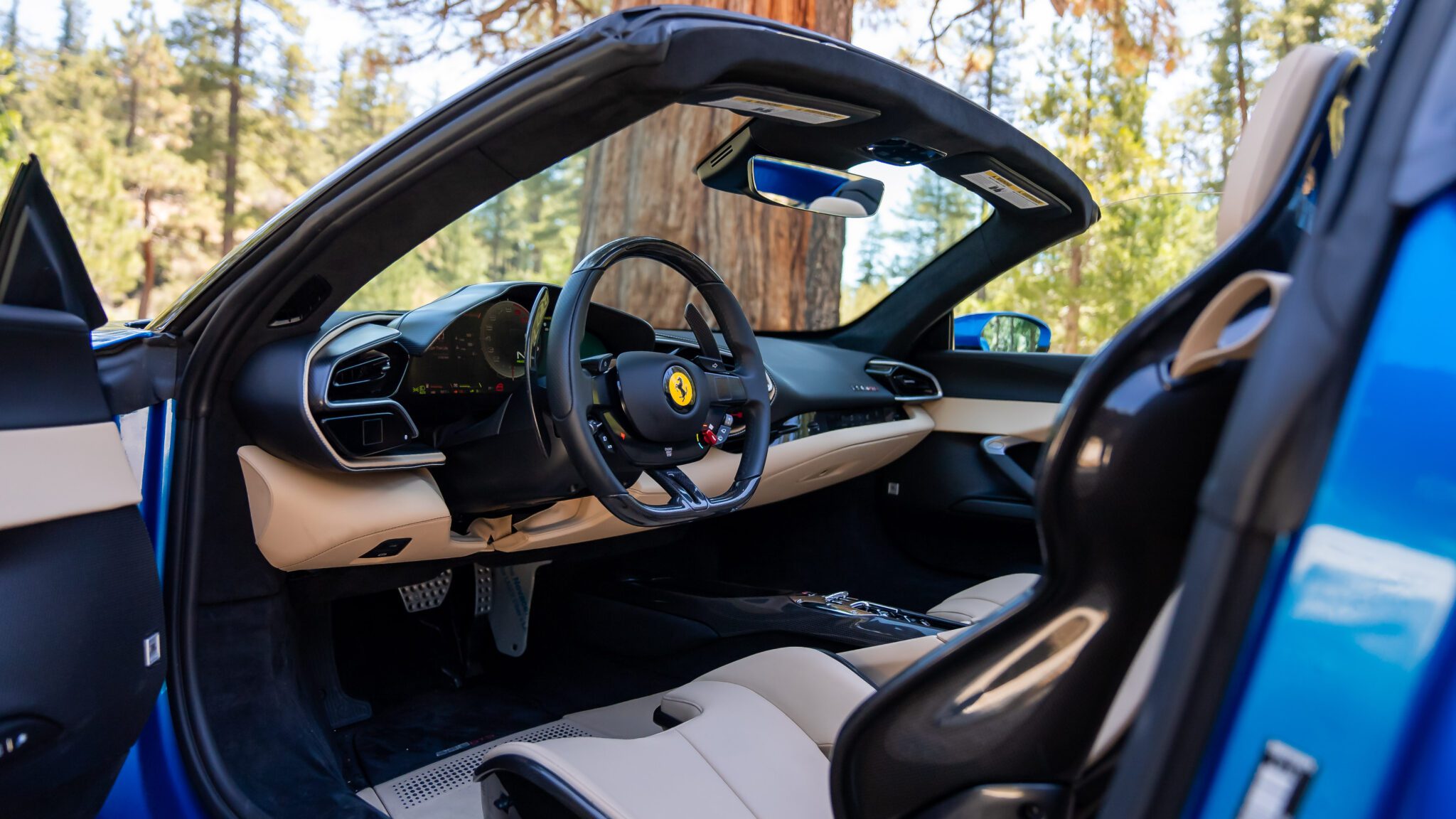
A blend of exposed carbon fiber, black, and Sabbia leather adorns this tester’s interior, contrasting its Blu Corsa paint. Practically everything you interact with feels as expensive as it is, and despite its haptic feedback-based infotainment remaining a point of frustration, it’s elegantly laid out nonetheless.
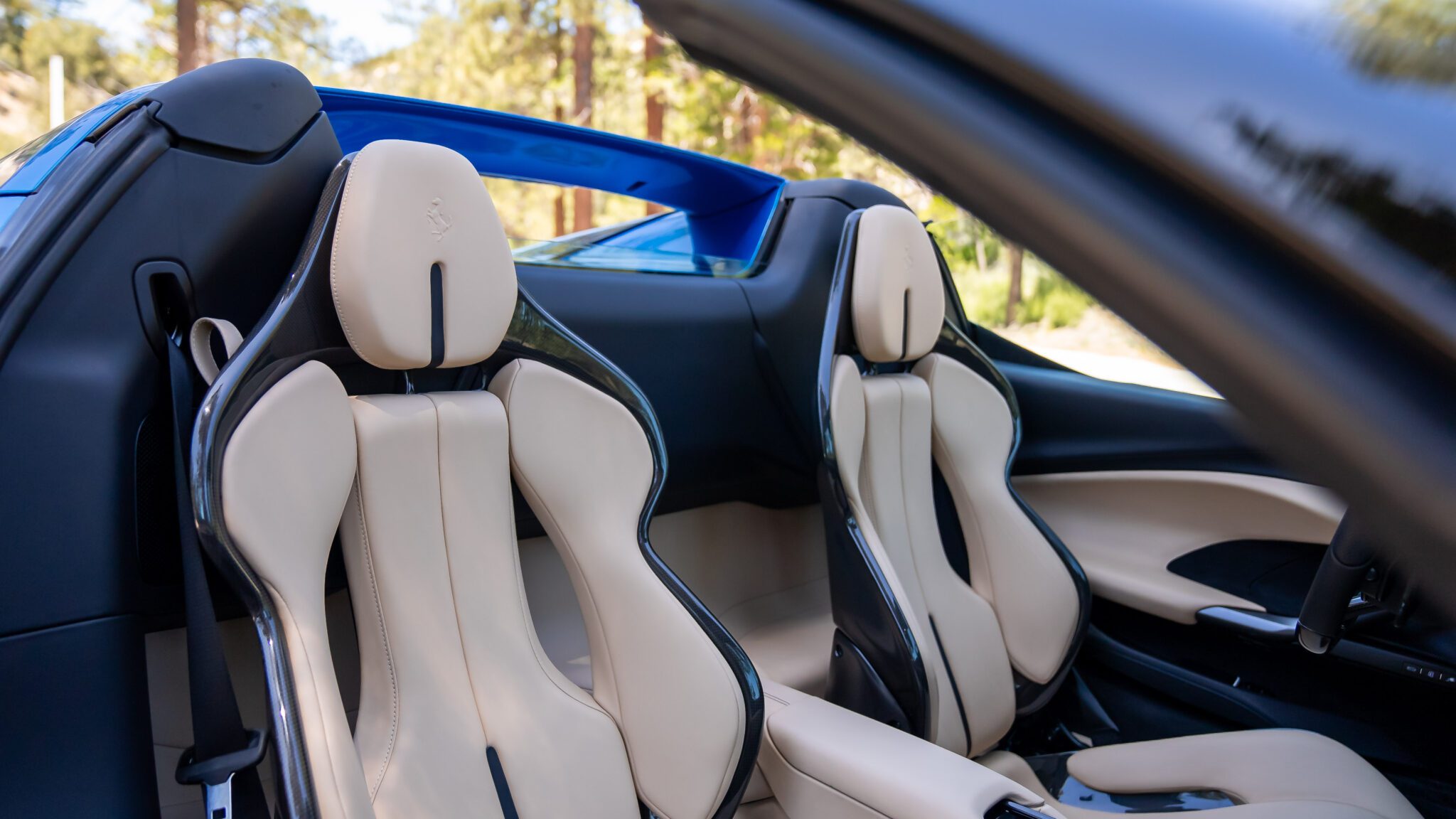
Despite featuring a folding roof, which stows in 14 seconds at speeds of up to 28 mph, the GTS’s cabin isn’t particularly noisy at highway speeds. With Apple CarPlay equipped and its stereo turned up, the 296 easily doubles as a competent grand-tourer, a side of its persona supported by its compliant suspension. This level of performance, style, and versatility does come at a cost, however. Although Ferrari doesn’t share exact figures, the GTS starts at around $400,000. This tester and its optional extras bump that figure to $500,538.
The doomers are right about one thing. Supercars and the wider automotive industry will only become more complex over time. What they’re wrong about, however, is that embracing technology, particularly electrification, will ultimately diminish what makes a Prancing Horse, or any other exotic, appealing in the first place.
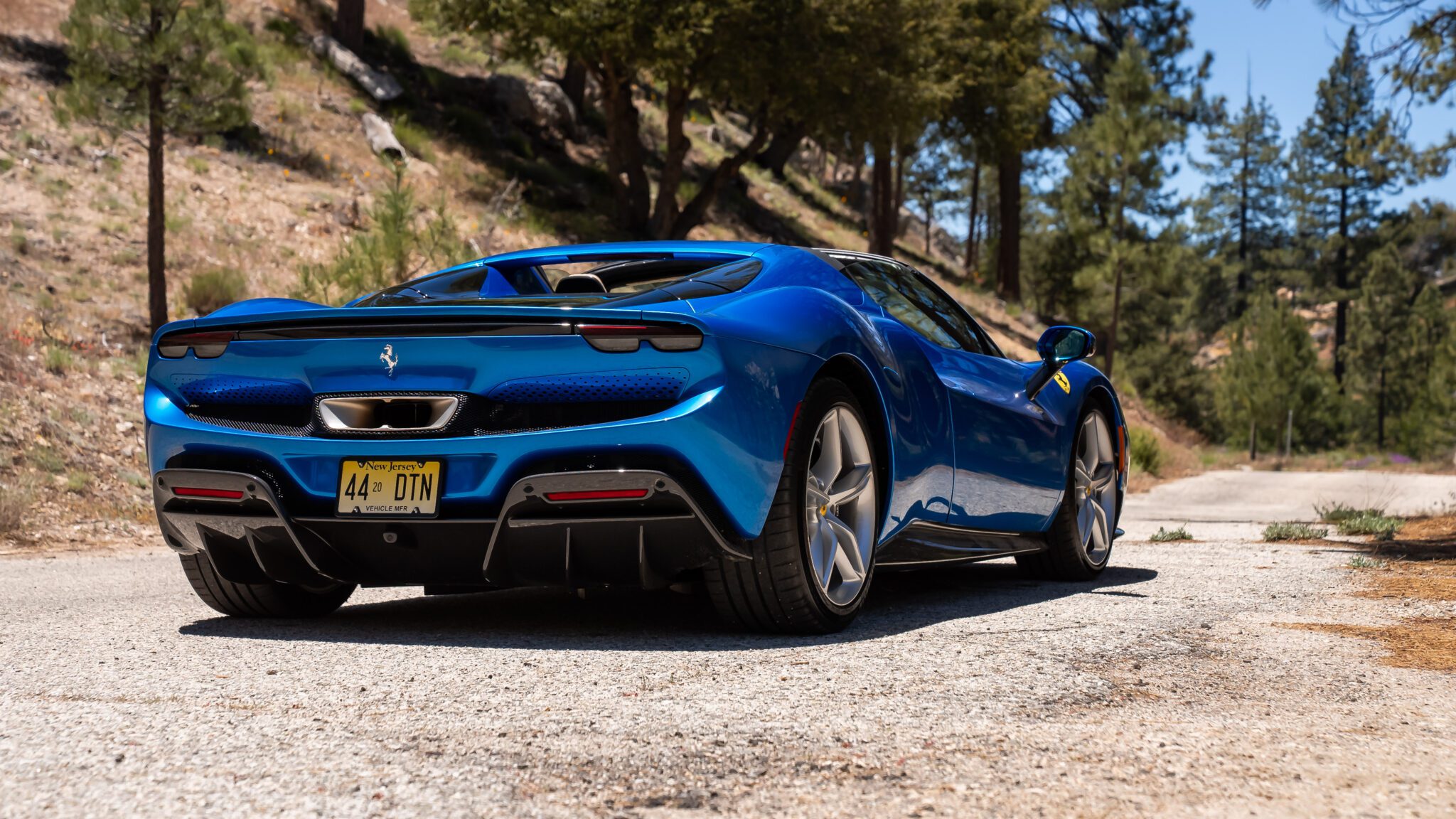
The Ferrari 296 GTS is a very complex machine. It has an internal combustion engine, an electric motor, a battery pack, and a folding roof. Yet simultaneously, by prioritizing the driving experience, it utilizes its many systems to create a sense of excitement. It may have taken Ferrari a second go to dial in its hybrid formula, but this second act is nothing short of a masterpiece. One that’s best enjoyed with the top down.

